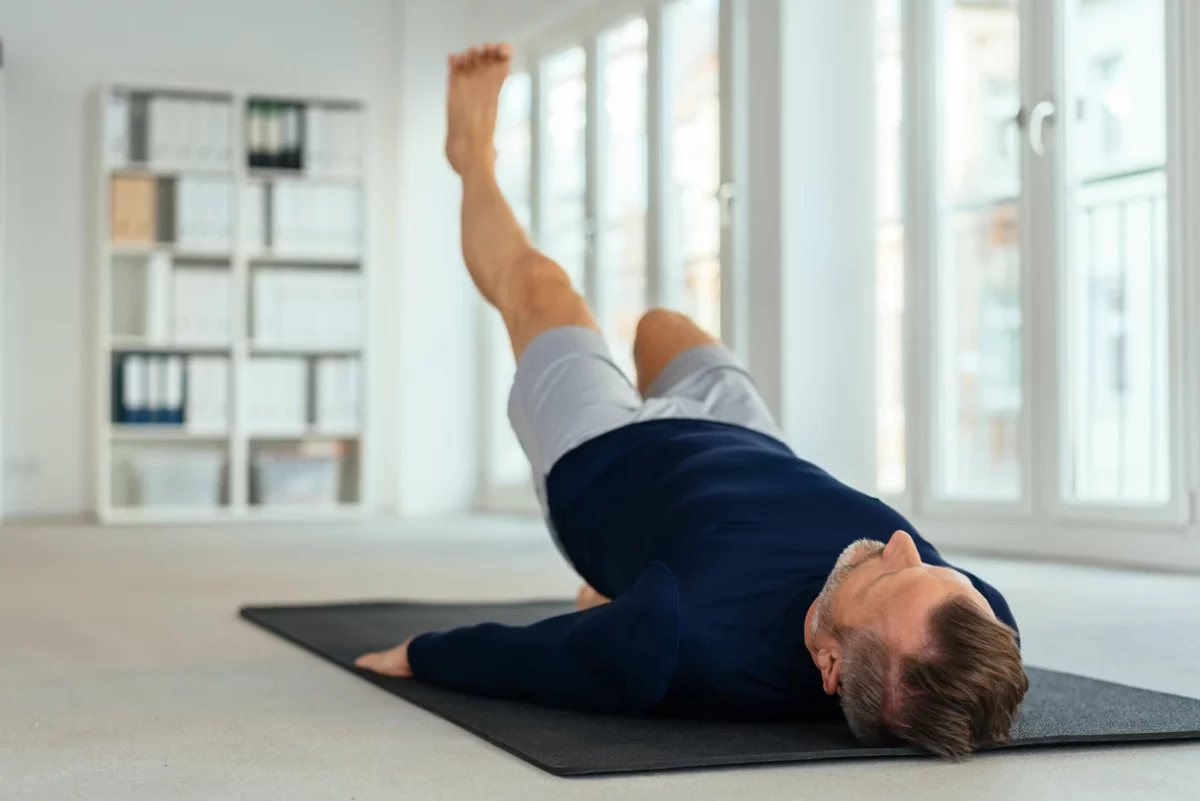Kegels are also known as pelvic floor exercises. They are essential for both genders. When performed consistently and regularly, Kegels can help solve male sexual issues and continence. This article will explore the benefits of Kegel exercises for men and the right way to perform them.
What are Kegel Exercises?
Kegel exercises were invented in 1948 by Dr. Arnold H. Kegel, an American gynecologist. Dr. Kegel published a study on pelvic floor strengthening exercises. Following surgery or childbirth, the activities were designed for females using a perineometer.
The pelvic floor exercises (Kegel exercises) are also beneficial to men.
It is important to note that the pelvic floor muscles form a sling that runs from the tailbone (behind) to the pubic bone (in front). Pelvic floor muscles support the bowel and the bladder and control the passing of wind, stools, and urine. They also contribute to erection during sex.
Several factors can contribute to a weakening of the pelvic floor in males. These include:
- Pelvic trauma or surgery
- Prostate surgery
- Persistent cough
- Straining to defecate
- A sedentary lifestyle
- Being obese or overweight
- Repeated heavy lifting
- Overactive bladder.
Benefits of Kegel Exercises for Males
Just like any other muscle, you can strengthen your pelvic floor muscles through exercises performed correctly, regularly, and consistently. The implication is that they can achieve their functions more reliable and better way.
The following are possible benefits of Kegel exercises for men:
1. Improved Sexual Health
Kegel exercises contribute to developing and strengthening the bulbospongiosus muscle, which plays a vital role in orgasm, erection, and ejaculation. Sometimes, healthcare providers may recommend Kegels to help reduce premature ejaculation and erectile dysfunction.
If you have any sexual dysfunction or are experiencing pelvic pain or incontinence, seek expert opinion from a certified clinician, pelvic health specialist, a physical therapist, or a urology clinic. They will give you detailed information and identify if your condition can be managed with Kegel exercises.
2. Improved Bladder and Bowel Control
Muscles of the pelvic floor are directly involved in controlling bowel movements and urine flow. If your pelvic floor muscles are weak, you will be at risk of constipation, urinary incontinence, an overactive bladder, inability to control flatulence, fecal incontinence, or leakage of urine during forceful activities like a laugh, sneeze, or a cough (also known as “stress incontinence”). By strengthening your pelvic floor via Kegel exercises, you can improve bladder control, continence, and bowel movement.
3. Your Chances of Prolapse are Reduced
Prolapse of the pelvic organ is a health condition in which the pelvic floor muscles are so weak that they are unable to support the pelvic organs (rectum and bladder). When you have a pelvic organ prolapse, at least one of the pelvic organs will fall below the pelvic floor, forming a bulge. And because Kegel exercises strengthen the muscles of the pelvis, they can help prevent weakness of the muscles and, subsequently, a prolapse.
Other benefits of Kegel exercises include:
- Helping control wind passage
- Preventing leakage of stool and urine
- Helps with complete emptying of the bladder.
The Right Way to Do Kegel Exercises
Very few things are as challenging as determining whether you are working on the right muscles while doing your pelvic floor exercises. Remember, these muscles are not visible.
Most times, people condition their glutes, inner thighs, or abdominals, making their Kegel movements less effective.
The first thing to do is to ensure that you are working on the right muscles. You can do this by:
- Imagine yourself trying to stop the passage of urine mid-stream
- Imagine trying to with-hold gas by squeezing and pulling upwards.
Feeling the contraction of the frontal muscles is more complex than feeling those at the back.
You have to be consistent in your Kegel exercises to feel the results. This can take weeks or even months. Kegel exercises can be done while sitting, standing up, or lying down. However, I recommend that you start the activities sitting or lying down.
Instructions vary for specific exercises, but they generally involve:
- Contracting or pulling up muscles of the pelvic floor
- Holding the contracted muscles for 3 – 5 seconds. This will be increased to 10 seconds with practice
- Relax slowly for 10 seconds
- Repeat 10 times, or until the muscles fatigue.
These exercises are known as slow-twitch exercises. You must follow these up by doing fast-twitch movements. Fast-twitch movements involve:
- Pulling up the muscles of the pelvic floor
- Holding the pelvic floor muscles briefly for a second
- Relaxing
- Repeat the exercises until your muscles are tired.
Ideally, Kegel exercises should be performed 3 – 4 times daily, repeating them gradually as their strength builds up.
Tips to Doing Kegel Exercises
These tips will help you perform your Kegel exercises perfectly:
- Breathe naturally, and do not hold your breath
- Tighten the muscles from front to back, pulling them inwards and upwards
- Do not flex or squeeze the buttock, abdominal muscles, or thigh
- Not raising toes, shoulders, or eyebrows
- Try out other positions, like squatting or standing.
Regular Kegel exercise will strengthen your pelvic floor over time. Gradually, it’ll become easier to hold or interrupt passing urine. However, you should not make this part of a regular exercise routine.
Men who cannot locate their pelvic floor muscles should consult their healthcare provider. Your healthcare provider can refer you to a continence advisor or physiotherapist for specialist assistance with these exercises.








